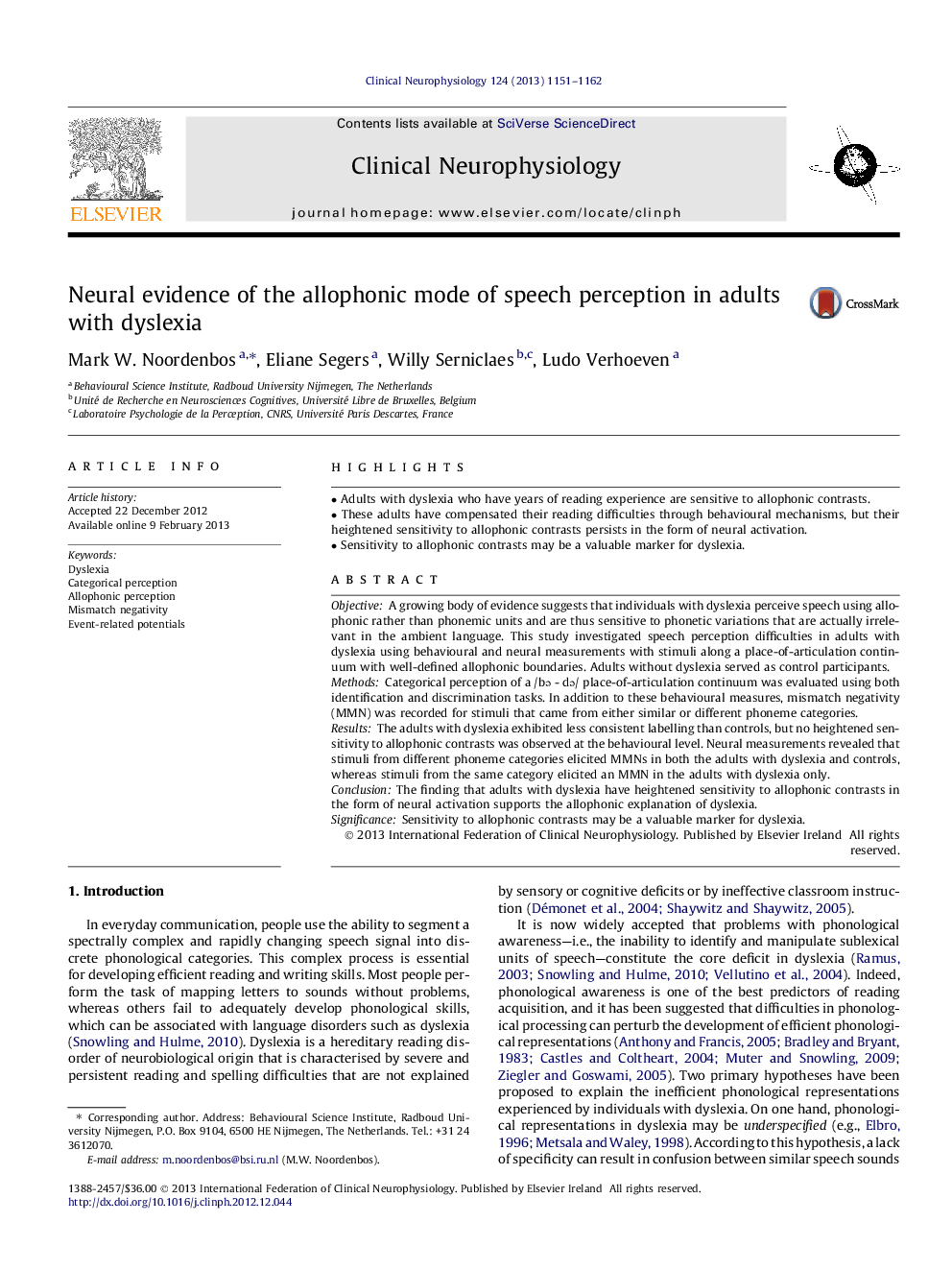| Article ID | Journal | Published Year | Pages | File Type |
|---|---|---|---|---|
| 3043870 | Clinical Neurophysiology | 2013 | 12 Pages |
ObjectiveA growing body of evidence suggests that individuals with dyslexia perceive speech using allophonic rather than phonemic units and are thus sensitive to phonetic variations that are actually irrelevant in the ambient language. This study investigated speech perception difficulties in adults with dyslexia using behavioural and neural measurements with stimuli along a place-of-articulation continuum with well-defined allophonic boundaries. Adults without dyslexia served as control participants.MethodsCategorical perception of a /bə - də/ place-of-articulation continuum was evaluated using both identification and discrimination tasks. In addition to these behavioural measures, mismatch negativity (MMN) was recorded for stimuli that came from either similar or different phoneme categories.ResultsThe adults with dyslexia exhibited less consistent labelling than controls, but no heightened sensitivity to allophonic contrasts was observed at the behavioural level. Neural measurements revealed that stimuli from different phoneme categories elicited MMNs in both the adults with dyslexia and controls, whereas stimuli from the same category elicited an MMN in the adults with dyslexia only.ConclusionThe finding that adults with dyslexia have heightened sensitivity to allophonic contrasts in the form of neural activation supports the allophonic explanation of dyslexia.SignificanceSensitivity to allophonic contrasts may be a valuable marker for dyslexia.
► Adults with dyslexia who have years of reading experience are sensitive to allophonic contrasts. ► These adults have compensated their reading difficulties through behavioural mechanisms, but their heightened sensitivity to allophonic contrasts persists in the form of neural activation. ► Sensitivity to allophonic contrasts may be a valuable marker for dyslexia.
